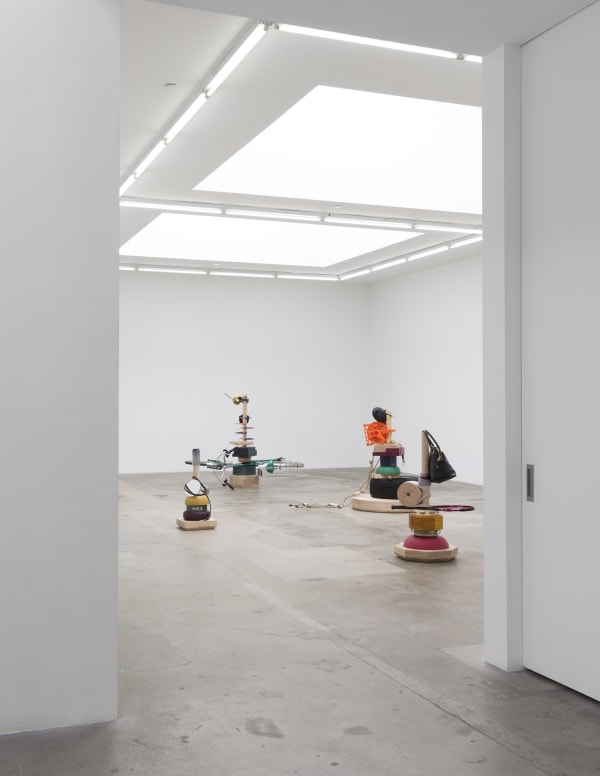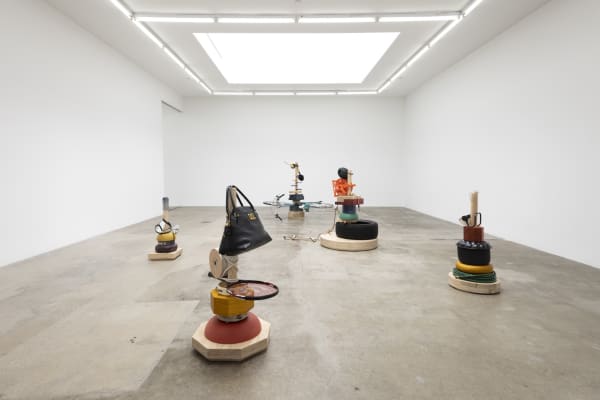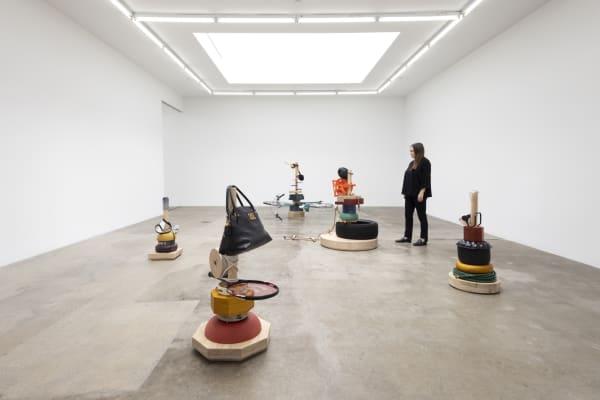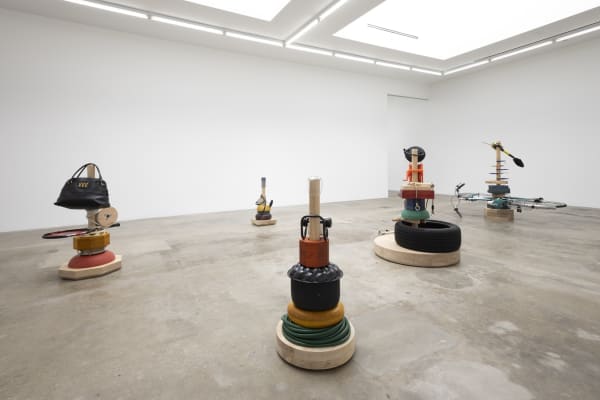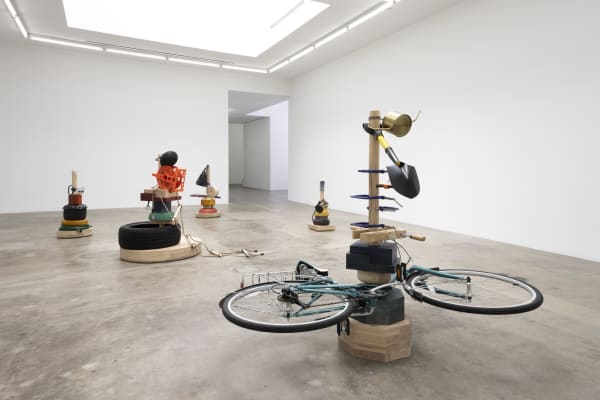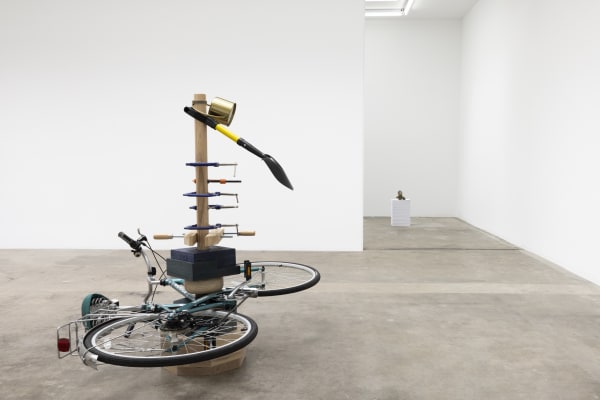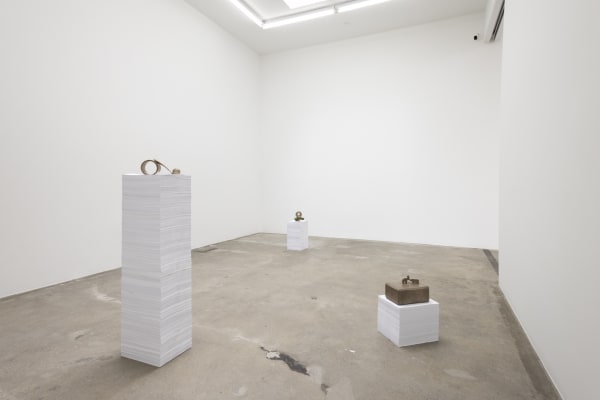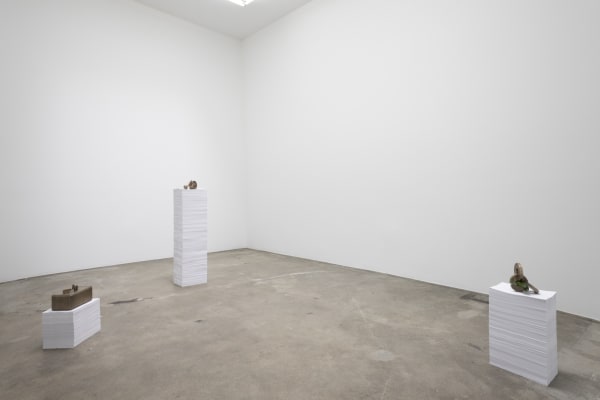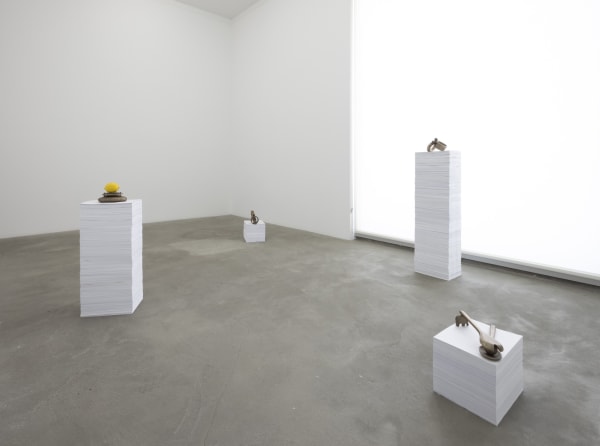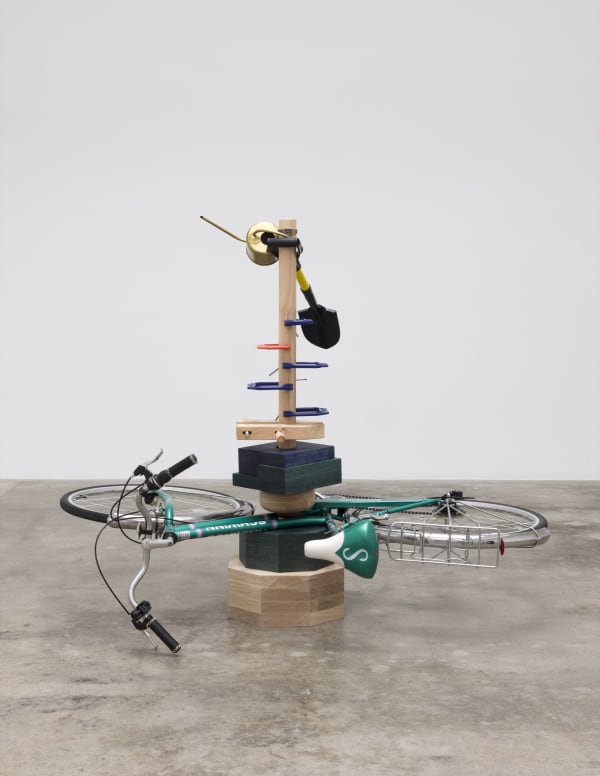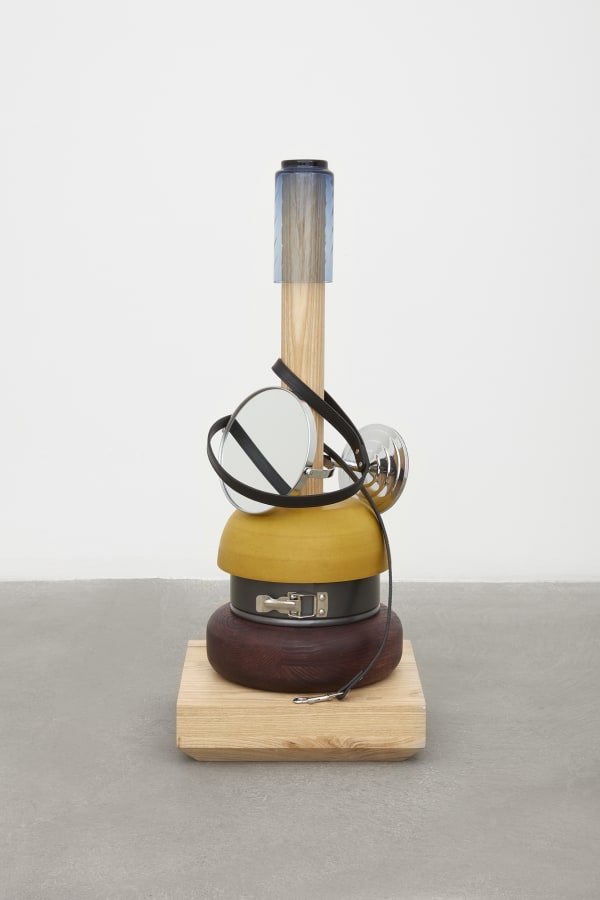Tanya Bonakdar Gallery is pleased to present Accumulations and Overlaps, Amalia Pica’s first exhibition with the gallery, on view in Los Angeles from September 11 through October 30, 2021.
Encompassing sculpture, performance, installation, video, and drawing, Amalia Pica’s work examines systems of communication and what brings people together. Using seemingly simple materials and found objects, her work often conveys a feeling of levity and joy, which Pica prioritizes for its power to draw viewers into a conversation. More recently, she has turned her attention to investigating the systems that are ubiquitous in contemporary society, especially administration and modes of assembly.
In the front and back galleries, eight bronze sculptures are displayed on stacks of standard printer paper, seemingly repurposed and tasked here as paperweights. In recent years, Pica has engaged in an ongoing investigation of bureaucratic structures and traditional office culture, purposefully using form in a playful manner to explore and counteract the tediousness of everyday work life. While working from home over the last several months, she was intrigued by the randomness of objects that accumulated as the boundaries between her professional and personal lives blurred. The paperweight sculptures consist of recognizable yet disparate objects such as children’s toys, studio supplies, sports equipment, and items collected from nature that have been arranged in dynamic compositions. These encounters among objects seem whimsical or surreal, yet demonstrate how material culture provides an accurate account of real life.
In the main gallery, five large-scale stackers, the popular children’s toy, are on view. Throughout her career, Pica has incorporated early systems of communication and organization into her work, and as a new mother, these objects represent a new presence and order in her life. The toys give children the opportunity to exercise elementary organizational skills, and these painted wood sculptures replicate the absurd logic children employ during play. Pica’s stackers are enlarged to the approximate size of a standing toddler, and random everyday objects such as bicycle tires, sprinkling cans, and handbags are looped onto the stackers. The literal overlapping of items applies the same proto organizational system to an artwork, illustrating the many ways different aspects of our lives also overlap.
Amalia Pica was born in 1978 in Neuquén, Argentina and currently lives and works in London. The artist received a BA from the Escuela Nacional de Bellas Artes P.P. in Buenos Aires in 2003 and attended graduate school at the Rijksakademie van beeldende kunsten in Amsterdam.
Pica has had solo exhibitions at Museum Haus Konstruktiv, Zurich (2020); Centro Andaluz de Arte Contemporáneo, Seville, Spain (2019); The New Art Gallery, Walsall, UK (2019); Perth Institute of Contemporary Art, Perth, Australia (2018); The Power Plant, Toronto (2017); NC Arte, Bogotá, Colombia (2017); Kunstverein Freiburg, Freiburg, Germany (2016): Van Abbemuseum, Eindhoven, The Netherlands (2014); List Visual Arts Center, MIT, Cambridge, Massachusetts (2013): Museo Tamayo Arte Contemporáneo, Mexico City (2013); Museum of Contemporary Art, Chicago (2013); Museo Nacional de Bellas Artes, Neuquén, Argentina (2013); Kunsthalle St. Gallen, St. Gallen, Switzerland (2012); Chisenhale Gallery, London (2012); Malmo Konsthall, Malmo, Sweden (2010); among many others.
Her work can be found in the permanent collections of Tate Collection, London; Museum of Modern Art, New York; Solomon R. Guggenheim, New York; Museum of Contemporary Art, Chicago; Museo Nacional de Bellas Arte Neuquén, Neuquén, Argentina; KADIST Art Foundation, Paris; Stedelijk Museum, Amsterdam; Frac-Collection Aquitaine, Bordeaux, France; Fundação De Serralves, Porto, Portugal; The Israel Museum, Jerusalem; and Museum of Fine Arts, Boston.
All installation images above: Photo by Jeff McLane
-
 Amalia Pica, Stacker #1, 2021
Amalia Pica, Stacker #1, 2021 -
 Amalia Pica, Stacker #2, 2021
Amalia Pica, Stacker #2, 2021 -
 Amalia Pica, Stacker #3, 2021
Amalia Pica, Stacker #3, 2021 -
 Amalia Pica, Stacker #4, 2021
Amalia Pica, Stacker #4, 2021 -
 Amalia Pica, Stacker #5, 2021
Amalia Pica, Stacker #5, 2021 -
 Amalia Pica, Paperweight #9, 2021
Amalia Pica, Paperweight #9, 2021 -
 Amalia Pica, Paperweight #8, 2021
Amalia Pica, Paperweight #8, 2021 -
 Amalia Pica, Paperweight #7, 2021
Amalia Pica, Paperweight #7, 2021 -
 Amalia Pica, Paperweight #6, 2021
Amalia Pica, Paperweight #6, 2021 -
 Amalia Pica, Paperweight #13, 2021
Amalia Pica, Paperweight #13, 2021 -
 Amalia Pica, Paperweight #12, 2021
Amalia Pica, Paperweight #12, 2021 -
 Amalia Pica, Paperweight #11, 2021
Amalia Pica, Paperweight #11, 2021 -
 Amalia Pica, Paperweight #10, 2021
Amalia Pica, Paperweight #10, 2021
